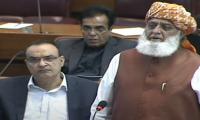Today (April 7) marks the anniversary of the founding of the WHO in 1948 and is observed worldwide as World Health Day. In the decades since 1948, the world has cleared several significant healthcare milestones. Among the most notable and impactful are the development of the inactivated polio vaccine and the attenuated live-virus polio vaccine in 1952 and 1961 respectively, paving the way for most advanced countries to eliminate the disease in the coming years. However, healthcare remains marked by jarring inequalities and as recently as 1988, polio was still endemic in about 125 countries and paralyzed over 350,000 children every year. This prompted the launch of the Global Polio Eradication Initiative. By 2022, the incidence of polio had fallen by 99 per cent, preventing some 20 million cases of the virus and an estimated 1.5 million childhood deaths. The virus is now only endemic in two countries. Pakistan is one of them.
The triumph over polio, and the vast reduction in the rates of deaths due to communicable diseases in general, is one of the rare happy stories of the last century or so. While gaps in wealth, safety and other key metrics have widened, health is the exception to the trend. Here the gaps have, in most cases, narrowed. There is little difference in terms of average life expectancy between Europe and Asia, even though the latter is far poorer. However, there are exceptions to every trend. This is not to say that healthcare outcomes in Pakistan have not improved over the years, only that they have done so slower than in other countries. In 1975, the country had an estimated life expectancy of around 55.9 years. That number, as of 2021, stands at around 66.1 years, reflecting a decline in the rate of preventable deaths and people leading longer lives too. Meanwhile, Indians were only expected to live around 50.8 years in 1975, on average, far behind Pakistan. By 2021, they had reached 67.24 years and left us behind. And this was after Covid-19, with the average life expectancy in India breaking the 70s barrier in 2019.
Getting left further and further behind others due to slow progress has arguably been the defining characteristic of Pakistan in recent decades. When it comes to healthcare, this laggard pace is in large part due to our paltry spending on it. Experts say we need a health budget of around 6 per cent of GDP, many times higher than the 1.4 per cent of GDP it currently stands at. The result has been predictable: abject healthcare poverty. Aside from polio, an estimated 7 per cent of Pakistani children are not fully immunized against measles, there is just over one physician for every thousand people and over 27 children will die before reaching their fifth birthday for every 1000 births per year. With each World Health Day, the list of lives that could have been saved only gets longer.
Vaccination does not necessarily require a physician to sit around administering doses to children
UNDP launched ‘Digital Development Index’ , which measures digital development progress across Pakistan’s...
PTI leader Shehryar Afridi addresses party workers in this undated photo. — Facebook/@shehryarkhanafridi1A day after...
Chief Justice Qazi Faez Isa poses for a photo. — Supreme Court website/FileChief Justice Qazi Faez Isa has said he...
India's Prime Minister Narendra Modi speaks after releasing the Bharatiya Janata Party's manifesto ahead of country's...
Prime Minister Shehbaz Sharif, Pakistan Poeples Party Co-chairperson Asif Ali Zardari, JUI-F chief Maulana Fazlur...







